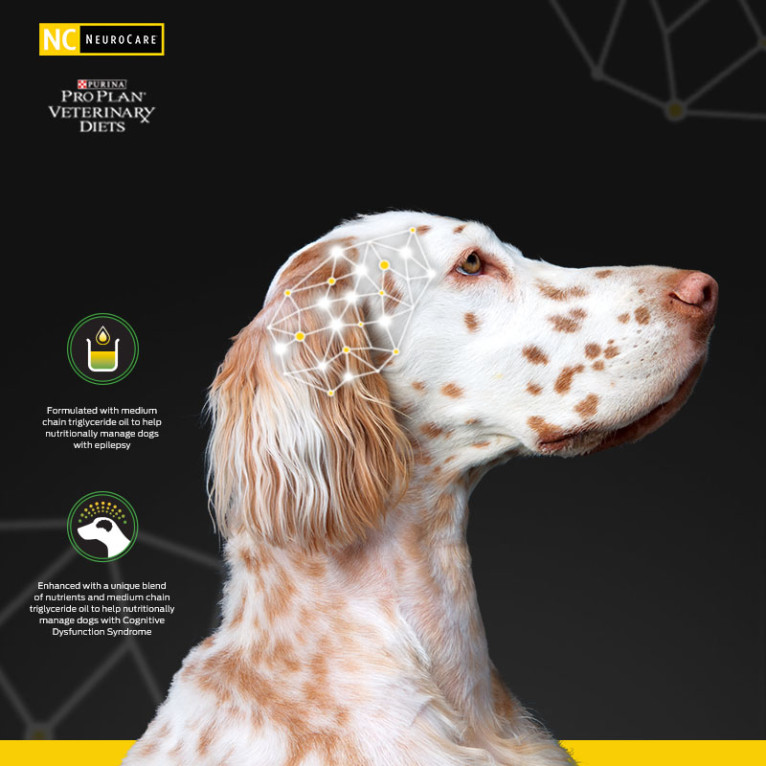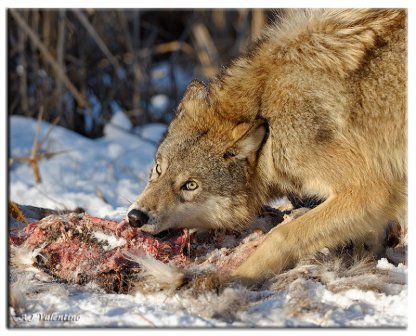Can Kibble Help Your Dog’s Seizures?
One of the biggest challenges we on the holistic or alternative side of veterinary medicine face is proving our theories are true. After all, we don’t have the funds available to us that large pharmaceutical or animal health companies have. Most universities are funded from traditional viewpoint sources, and few are interested in testing Chinese herbs, natural diets, homeopathics, or other natural remedies. There are exceptions, such as the amazing study done at the University of Pennsylvania on the effectiveness of a mushroom derived compound that produced significantly longer survival times in dogs with hemangiosarcoma. Yes, the mushroom based compound treated this aggressive cancer far more effectively than any research expected. And the encouraging study from Cornell University’s College of Veterinary Medicine showing the efficacy of CDB oil in arthritic dogs. (full study for you science fans here).
What a dog is fed is a crucial factor in health, whether the dog is normal or suffering a health problem. Common sense, right? When you consider all the “prescription” diets available, it’s clear that the veterinary food companies have taken this ball and run all over with it. There are diets for all sorts of conditions, for combinations of conditions, in various forms and flavors, and from at least five different companies. This fits in nicely with the Western medical approach – if you have condition X, you treat it with product Y. Wait for the disease to show up, then treat it.
My approach is very different. I don’t wait to see disease or abnormalities. I want to promote health, and support the dog’s body in a biologically appropriate way. So you can imagine my interest when I heard about Purina’s new prescription diet, NeuroCare®. It is intended for dogs with epilepsy. It is labeled to reduce seizure frequency in epileptic dogs that are already on medication. Exciting new research is pointing toward a higher fat, very low carbohydrate diet as being most beneficial for dogs with seizures. Perhaps that research was Purina’s inspiration for formulating NeuroCare.® Is Purina finally getting it right, and designing a product in accord with the dog’s biology?
Sadly, no.
 When I went to Purina’s website to see what was in the food, I found the first twelve ingredients are chicken, chicken meal, corn gluten meal, brewers rice, ground yellow corn, ground wheat, medium-chain triglyceride vegetable oil, corn germ meal, barley, natural flavor, fish oil, dried egg product. Other than the MCT oil, not much different from any other of their dry dog foods. The guaranteed analysis shows 15% fat, 33% carbohydrates. Hardly revolutionary — in fact there are several non-prescription foods higher in fat and lower in carbohydrates. Oh, and that medium chain triglyceride (MCT) oil? I’m not sure if anyone has let Purina in on the secret, but MCT oil is widely available, in stores, online, over the counter. Coconut oil is quite rich in medium chain triglycerides. Owners have been adding this “secret ingredient” to their dog’s meals for years.
When I went to Purina’s website to see what was in the food, I found the first twelve ingredients are chicken, chicken meal, corn gluten meal, brewers rice, ground yellow corn, ground wheat, medium-chain triglyceride vegetable oil, corn germ meal, barley, natural flavor, fish oil, dried egg product. Other than the MCT oil, not much different from any other of their dry dog foods. The guaranteed analysis shows 15% fat, 33% carbohydrates. Hardly revolutionary — in fact there are several non-prescription foods higher in fat and lower in carbohydrates. Oh, and that medium chain triglyceride (MCT) oil? I’m not sure if anyone has let Purina in on the secret, but MCT oil is widely available, in stores, online, over the counter. Coconut oil is quite rich in medium chain triglycerides. Owners have been adding this “secret ingredient” to their dog’s meals for years.
A study was also recently completed that showed NeuroCare also improved signs of cognitive dysfunction (compared to baseline) following a 90 day feeding period.
NeuroCare’s® first ingredient is chicken, which is measured by weight with moisture included, unlike the other ingredients. Chicken meal is weighed as a dry powder. Then we have four grain ingredients, which probably make up the bulk of the food. Of course these grains are biologically unnecessary, and are metabolized to sugars, which we know promote inflammation and cancer in the body. Further down the list of ingredients we have more grains, natural flavor (whatever that is), and dried egg product. The official definition of egg product is “… the unused leftovers from eggs for human production. It can include undeveloped eggs, shells, and other tissues unfit for human consumption.”
And Purina is not the only company with a horse in the race to help brain function in our dogs. Hill’s® has come out with Canine b/d, formulated to help fight age-related behavior changes in older dogs. It contains carnitine, omega 3 fatty acids, and antioxidants. Older dogs fed this diet for 6 months had fewer errors on discrimination tests than dogs fed a control diet. So what magic is in the food?
The first twelve ingredients, taken from the Hill’s website, are: Whole Grain Corn, Chicken By-Product Meal, Pork Fat, Brewers Rice, Soybean Mill Run, Soybean Meal, Flaxseed, Fish Meal, Chicken Liver Flavor, Lactic Acid, Egg Product, Soybean Oil. The analysis tells us that this food is approximately 56% carbohydrate on a dry matter basis! Hardly something nourishing for a species with the protein needs of a dog!
Do these foods sound like something you would want to give your dog, especially one suffering with a health problem? Would you pay $5.50 a pound for it? Yet there are veterinarians all over now recommending this food, and others like it! They have placed their trust in the food manufacturers, as they have been taught in veterinary schools and at conferences and continuing education meetings.
But something amazing is happening. Information is flowing freely to owners. Pet owners are learning more. They are are becoming educated, and they don’t want canned (pun intended!) advice coming from the food manufacturer via their vet. Are you following Truth About Pet Food, the leading pet food safety advocacy sit e? Dog owners are not blindly trusting pet food companies anymore. And this is going to have a huge impact on how dogs are fed.
e? Dog owners are not blindly trusting pet food companies anymore. And this is going to have a huge impact on how dogs are fed.
As a veterinarian who has been on the real, fresh food path for over 20 years, I find it very easy to explain to owners why I advocate for feeding dogs in harmony with their biology. And I feel for my colleagues whose eyes have not been opened to viewing the dog’s needs from the perspective of his biology. After all, no veterinarian would deny pandas bamboo — it’s what they eat. Nor would they try to feed a horse a meat based diet. So why are dogs and cats fed super-processed, biologically inappropriate products, when their nearest living relatives in captivity, big cats, wolves, and coyotes, are fed chunks of prey, as close to their natural diet as possible? The short answer is because that is what the pet food industry wants to sell us. And their marketing departments do that very well. Why are we surprised when dogs fed processed, starch laden kibble diets, often costing more than fresh whole foods, either just survive or develop health problems?
 While Purina and Hill’s may have embraced the concept of what an epileptic or aging dog might benefit from, they cannot let go of kibble. Not only does making kibble require including significant amounts of starch, but it also keeps costs down, as starches are cheap. So, rather than being progressive, and making a product that actually is food, they continue to tweak the kibble recipe just enough to be able to claim a benefit, and maximize profit. Imagine what would be possible if they actually used ingredients that the dog’s body is designed to digest? You don’t have to imagine it – read about what the Ketopet Sanctuary is accomplishing in the fight against cancer with a fresh, real food diet. Ask any holistic veterinarian what happens when a dog is taken off kibble and started on a whole food diet. Ask any owner whose dog no long has four ear infections each year, or who outlives a cancer prognosis by many years. I see it in my patients every day. That’s why I became a veterinarian – to improve and enhance the health of my patients. The first step toward that is the step away from kibble.
While Purina and Hill’s may have embraced the concept of what an epileptic or aging dog might benefit from, they cannot let go of kibble. Not only does making kibble require including significant amounts of starch, but it also keeps costs down, as starches are cheap. So, rather than being progressive, and making a product that actually is food, they continue to tweak the kibble recipe just enough to be able to claim a benefit, and maximize profit. Imagine what would be possible if they actually used ingredients that the dog’s body is designed to digest? You don’t have to imagine it – read about what the Ketopet Sanctuary is accomplishing in the fight against cancer with a fresh, real food diet. Ask any holistic veterinarian what happens when a dog is taken off kibble and started on a whole food diet. Ask any owner whose dog no long has four ear infections each year, or who outlives a cancer prognosis by many years. I see it in my patients every day. That’s why I became a veterinarian – to improve and enhance the health of my patients. The first step toward that is the step away from kibble.
Taking that first step into a fresh food feeding plan can be a bit scary, but there are many resources to help you. Please follow my Facebook page for links to info and news, as well as to comment or ask questions. Below are some references I recommend. Prefer to have personal help? Phone support is available, as well as in person help from holistic veterinarians — find one near you at AHVMA.org.



